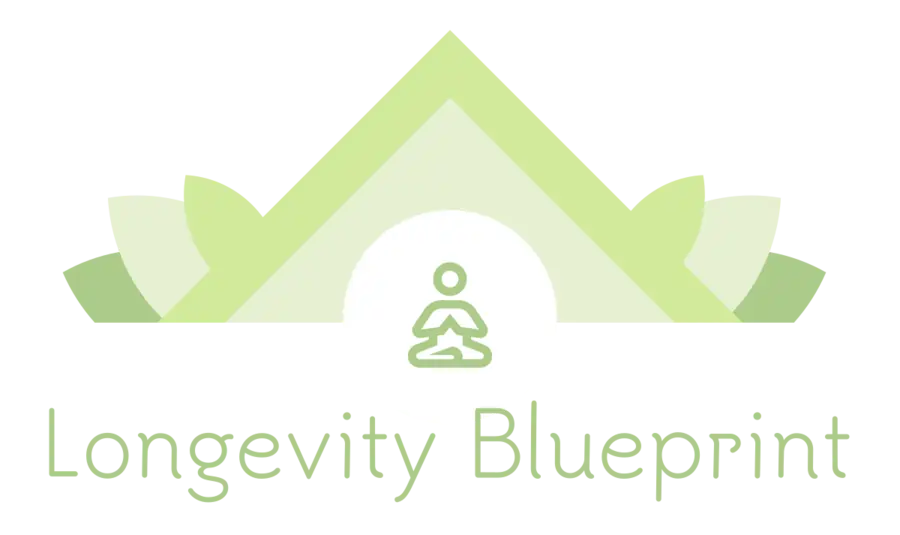NMN vs NR: Which Anti-Aging Supplement Actually Works? [2025 Science]
![NMN vs NR: Which Anti-Aging Supplement Actually Works? [2025 Science] 1 NMN vs NR](https://longevityblueprinthealth.com/wp-content/uploads/2025/05/810384d5-0f16-477a-abe0-0872e930cf72-1.webp)
The scientific community has turned its attention to NMN vs NR supplements as key players in anti-aging research. Scientists have discovered that declining NAD+ levels play a crucial role in how we age. Our bodies produce less NAD+ as we get older, and this molecule helps power over 500 enzymatic reactions that keep our cells healthy and energized.
NMN (nicotinamide mononucleotide) and NR (nicotinamide riboside) both aim to boost our NAD+ levels, but they take different paths in our bodies. NR needs an extra step – it must transform into NMN before becoming NAD+. NMN stands ready one step closer to becoming NAD+. Research shows impressive results with NR supplements: a 250 mg dose can boost NAD+ levels by 40%, while a 500 mg dose pushes that increase to almost 90%.
The scientific community’s debate between these two supplements grows more intense as new research emerges. NR shines with better bioavailability, but NMN proves more stable once it enters our bloodstream. Many people say they feel stronger effects from NMN when it comes to energy and brain function, though both supplements show promise in studies.
The sort of thing I love about this field is how organizations like NASA and the U.S. military study NMN. They want to know if it can prevent muscle loss and shield DNA from cosmic radiation. This high-profile interest shows just how important these supplements could be for anti-aging research.
Which supplement actually delivers on its anti-aging promises – NMN or NR? Let’s get into the science behind both supplements to help you choose the right one for your health goals.
Understanding NAD+ and Its Role in Aging
![NMN vs NR: Which Anti-Aging Supplement Actually Works? [2025 Science] 2 Understanding NAD+ and Its Role in Aging](https://longevityblueprinthealth.com/wp-content/uploads/2025/05/8ff2b861-fdc8-44a9-b427-f2044d872d33-1.webp)
Image Source: Nature
“NMN is a natural molecule that helps restore NAD+, an important coenzyme your body needs for energy and healthy cells. Your body makes less NAD+ as you get older.”
— Jinfiniti Research Team, Longevity research organization specializing in NAD+ testing
Your body’s cells rely on a molecule called NAD+ (nicotinamide adenine dinucleotide) to work properly. NAD+ acts like your cellular battery—without it, cells can’t generate the energy they need. This molecule serves as the foundation for both NMN and NR supplements, which explains their popularity in anti-aging research.
Why NAD+ Declines with Age
You probably remember feeling energetic as a child. That vitality comes in part from high NAD+ levels. By middle age, NAD+ drops to about half of what you had in your youth [1]. Several specific mechanisms cause this decline.
CD38, an enzyme that becomes more active as you age, is the biggest problem behind NAD+ decline. Research shows CD38 levels go up in tissues throughout the aging process and use up large amounts of NAD+ [2]. CD38 uses up to 80% of cellular NAD+ in aged tissues [2].
There’s another reason for NAD+ decline: increased PARP activity from DNA damage buildup. PARPs (poly(ADP-ribose) polymerases) are vital for DNA repair, but they use up NAD+ reserves when activated [2]. On top of that, chronic low-grade inflammation—often called “inflammaging”—activates CD38+ pro-inflammatory macrophages, which speeds up NAD+ consumption [2].
The enzyme NAMPT (nicotinamide phosphoribosyltransferase), which recycles NAD+, becomes less efficient over time [3]. This creates a double problem: your body uses more NAD+ while producing less of it.
How NAD+ Supports Cellular Health
NAD+ stands out from other molecules—it participates in over 500 enzymatic reactions that your cells need to stay healthy. It works as both a coenzyme in energy production and a substrate for signaling enzymes that keep cells working properly [1].
Your cells need NAD+ to convert nutrients into ATP—their energy currency. NAD+ drives glycolysis, mitochondrial respiration, and helps cells switch between using carbs and fats for fuel [4].
NAD+ powers three key enzyme families:
- Sirtuins – Regulate gene expression, metabolism, and cellular stress responses
- PARPs – Repair damaged DNA and maintain genomic stability
- CD38/CD157 – Control calcium signaling and immune function
Sirtuins deserve special attention for their role in cellular health. These “longevity proteins” can’t work without NAD+ [3]. Low NAD+ levels reduce sirtuin activity, which leads to more cellular damage, weaker stress resistance, and changes in gene expression [1].
NAD+ keeps your cellular power plants—mitochondria—running smoothly. So when NAD+ levels drop, mitochondria start to fail, creating more reactive oxygen species and producing less energy [2].
The Link Between NAD+ and Longevity
Scientists have found solid evidence linking NAD+ to longevity. Studies of organisms from yeast to mice show that higher NAD+ levels can extend lifespan [2].
Mice that received restored NAD+ levels showed better fitness and improved mitochondrial function in their muscles [2]. Nicotinamide riboside supplements given to two-year-old mice improved their stem cell function and slightly extended their remaining lifespan [5].
The benefits go beyond just living longer. Restoring NAD+ levels improves many aspects of aging, including DNA repair, mitochondrial function, inflammation levels, and metabolic health [3].
Human studies suggest NAD+ supplements might improve aging signs, including heart health, muscle function, and mitochondrial efficiency [1]. Yes, it is helpful in curbing age-related issues like cognitive decline, metabolic disorders, and reduced physical performance [4].
This explains why NMN and NR supplements have gained attention—they want to restore declining NAD+ levels through different pathways. NR needs to convert to nicotinamide mononucleotide before becoming NAD+, while NMN is already closer to the final product [3].
How NMN and NR Work in the Body
![NMN vs NR: Which Anti-Aging Supplement Actually Works? [2025 Science] 3 How NMN and NR Work in the Body](https://longevityblueprinthealth.com/wp-content/uploads/2025/05/Overview-of-NAD-metabolism-pathway-NA-nicotinic-acid-NAM-nicotinamide-QA-quinolinic.webp)
Image Source: ResearchGate
Your body starts an amazing biochemical trip the moment you take that NMN or NR supplement. These molecules follow different paths but share the same goal: increasing your NAD+ levels. The way these pathways work explains why some people might get better results from one supplement over the other.
Conversion Pathways: NR → NMN → NAD+
The ongoing debate between nicotinamide mononucleotide vs nicotinamide riboside comes down to their conversion pathways. Your cells need to convert NR to NMN before it becomes NAD+, which requires an extra step [6]. This change happens through enzymes called nicotinamide riboside kinases (NRK1 and NRK2). These enzymes add a phosphate group to NR [7].
NMN stands just one step away from becoming NAD+ and needs only a single conversion step [7]. Nicotinamide mononucleotide adenylyltransferases (NMNATs) handle this by adding an adenyl group to NMN to create NAD+ [8]. This pathway produces about 85% of your body’s total NAD+ supply [9].
Both pathways meet up eventually, which explains why NMN and NR supplements can both raise NAD+ levels effectively. The efficiency varies based on how these enzymes are distributed and expressed in different tissues [10].
Cellular Uptake: Direct vs Indirect Transport
Scientists first thought NMN had to become NR before entering cells because of its larger size [7]. They later found a specific transporter called Slc12a8 that lets NMN (but not NR) enter certain tissues directly [11].
The small intestine shows high activity of this Slc12a8 transporter, which plays a vital role in energy metabolism [5]. NMN can enter blood circulation in just 5-10 minutes [11]. About 30% of the existing NMN pool moves into cells within an hour through Slc12a8 [11].
NR enters cells through equilibrative nucleoside transporters that help it cross cell membranes easily [5]. The body makes more Slc12a8 when NAD+ levels drop, suggesting it prioritizes NMN uptake during low NAD+ conditions [11].
Enzymes Involved in NAD+ Synthesis
Several enzymes coordinate the conversion of NMN and NR into NAD+. NAMPT (nicotinamide phosphoribosyltransferase) acts as the rate-limiting enzyme in the NAD+ salvage pathway [6]. This enzyme turns nicotinamide into NMN but works nowhere near as efficiently as other pathway enzymes – creating a bottleneck in NAD+ production [6].
NRK1 and NRK2 are well-preserved enzymes that turn NR into NMN very efficiently – researchers achieved 100% conversion of NR at 50 g/L concentration [6]. The NMNAT enzyme family (NMNAT1 in nucleus, NMNAT2 in cytosol, and NMNAT3 in mitochondria) converts NMN to NAD+ across different cell compartments [7].
CD73 (5′-ectonucleotidase) helps by converting NMN to NR outside the cell [7]. This external change helps explain why some studies show NMN needs to become NR first before cells can absorb it [12].
These complex biochemical pathways are the foundations of the ongoing nmn vs nr supplement debate. Each supplement offers unique benefits depending on your body’s enzyme landscape and cellular transport mechanisms.
Molecular Differences Between NMN and NR
![NMN vs NR: Which Anti-Aging Supplement Actually Works? [2025 Science] 4 Molecular Differences Between NMN and NR](https://longevityblueprinthealth.com/wp-content/uploads/2025/05/d89460a7-0e1a-4460-ba28-a3fffb07197e-1.webp)
Image Source: NMN.com
A look at NMN and NR at the molecular level shows significant differences that explain their unique behavior in your body. These differences, though small, can substantially affect how your body absorbs, moves, and turns each supplement into NAD+.
Molecular Size and Structure
You might wonder why two molecules with similar names work so differently. The answer lies in their chemical makeup. NMN and NR have almost similar molecular frameworks—both contain nicotinamide attached to a ribose sugar. But NMN has one key addition: a phosphate group [4].
This phosphate group makes NMN bigger than NR [4]. NMN is just NR with an extra phosphate group [1]. This size difference matters a lot—it changes how each molecule interacts with cell membranes and transporters.
NMN weighs more than NR because of this extra phosphate group. This structural difference puts NMN one step closer to NAD+ in the biosynthetic pathway [4]. But this advantage comes with some drawbacks when entering cells.
Transporter Dependency: Slc12a8 vs Passive Diffusion
Scientists used to think NMN had to change into NR before entering cells due to its size and charged phosphate group [13]. This view changed completely in 2019 when researchers found a specific NMN transporter called Slc12a8 [14].
The Slc12a8 transporter works fast—it moves NMN in minutes, while NR takes much longer, usually hours [3]. Tests showed that reducing Slc12a8 in cells dropped NMN uptake by about 90% in just 5 minutes [3].
Slc12a8 moves only NMN, not NR or other related compounds [3]. The transporter’s binding affinity (Km) is about 34 μM, which matches normal NMN levels in mice [3]. Slc12a8 needs sodium ions to move NMN [14].
NR, on the other hand, enters cells through passive diffusion or nucleoside transporters [4]. NR can cross cell membranes more easily than NMN because it’s smaller and lacks a charged phosphate group.
Your small intestine has lots of Slc12a8—about 100 times more than brain or fat tissue [15]. This explains why your gut absorbs oral NMN so well. Your body makes more Slc12a8 when NAD+ levels drop, suggesting it needs more NMN during these times [3].
Stability in Bloodstream and Gut
These NAD+ precursors differ in stability too. NMN stays more stable in blood compared to NR [1]. Most NR changes to nicotinamide within an hour in mouse blood, while NMN levels stay steady [1].
Both molecules react to temperature, but proper storage helps maintain their quality. NR stays good for six hours at room temperature and seven days in the fridge at 2-8°C [4]. NMN remains 93-99% intact in drinking water at room temperature for 7-10 days [15].
Harvard University’s David Sinclair stresses proper storage: “Make sure your NR and NMN is kept in the cold. If it’s just on the shelf and it’s not in a stabilized form, then it will degrade to nicotinamide, which is something you don’t want to take high doses of” [4]. This breakdown to nicotinamide can block sirtuins and hurt DNA repair—exactly what you don’t want from these supplements.
NMN’s absorption speed stands out. Mice given oral NMN show sharp increases in blood NMN within 2.5 minutes, with more increases at 5-10 minutes [15]. This quick uptake shows how well the Slc12a8 transport system works.
Bioavailability and Absorption Efficiency
![NMN vs NR: Which Anti-Aging Supplement Actually Works? [2025 Science] 5 Bioavailability and Absorption Efficiency](https://longevityblueprinthealth.com/wp-content/uploads/2025/05/1-s2.0-S1550413117306708-gr2.webp)
Image Source: ScienceDirect.com
The trip from your mouth to your cells shows why choosing between NMN vs NR isn’t always simple. Your body might work better with one supplement over the other, based on how it processes these molecules.
Oral Absorption: NMN vs NR
You might ask why some people get better results from one supplement than the other. The answer lies in how our bodies absorb them. Your body absorbs NMN faster – it takes just 2-3 minutes after you take it [16]. Blood NMN levels peak at 2.5 minutes, keep rising until 10 minutes, then go back to normal by 15 minutes [16].
NR’s absorption pattern is different. Instead of the quick spike you see with NMN, NR gradually builds NAD+ levels, usually reaching its peak after about 9 days of regular use [2]. Each person’s body processes NR differently [2], which explains why some people see stronger results than others.
Scientists have found NMN naturally exists in the small intestine’s jejunum and ileum [3]. Your body’s ability to absorb NMN decreases as you age [3]. This means younger people might process NMN better than older adults – the very people who need NAD+ boosting most.
Bloodstream Conversion Rates
NMN and NR convert differently once they reach your bloodstream. After taking NMN, liver NAD+ levels steadily increase from 15 to 30 minutes [16]. Scientists using specially marked NMN found it in the liver just 10 minutes after taking it [16].
A single 1000mg dose of NR can boost blood NAD+ levels up to 2.7 times in some people [17]. Studies show you need to take it regularly since NR doesn’t stay in your system very long [2].
Your gut bacteria substantially affect both supplements. Recent studies show these microbes change much of the NMN and NR into nicotinic acid (NA), which then makes NAD+ through a different path [18]. Your unique gut bacteria add another layer of variation to how well these supplements work.
Tissue Penetration and Distribution
These molecules spread differently throughout your body after absorption. NMN mostly goes to the liver [7], but certain compounds can improve its distribution. Combining it with resveratrol increases heart distribution by 1.39 times [7], while NAD+ levels in heart and skeletal muscle rise by 1.59 and 1.72 times respectively [7].
The results become even more impressive when you combine NMN with ginsenosides Rg3 and Rh2. This combination boosts NMN distribution to the brain (4.14 times), heart (2.31 times), kidney (4.47 times), and lung (2.39 times) [7]. This suggests the right combination might boost NMN’s effectiveness in specific body parts.
NR spreads differently through your tissues. It works better in the liver, skeletal muscles, and brown fat [2], thanks to higher levels of NR kinases (especially Nmrk2) in these areas. NR has limited ability to reach the brain [2], which matters if you’re looking for cognitive benefits from NAD+ precursors.
Scientists still debate whether NMN can cross the blood-brain barrier. However, injecting NMN directly into the body quickly raises NAD+ levels in brain areas like the hippocampus and hypothalamus within 15 minutes [19], suggesting possible benefits for brain function.
Scientific Evidence from Human and Animal Studies
“However, NR and NMN supplementation exhibited minimal or no efficacy against aging and age-associated diseases in several clinical trials”
— Science Advances Research Team, Peer-reviewed scientific journal published by the American Association for the Advancement of Science
Scientific research gives us clear answers about NMN vs NR supplements. Clinical studies help us learn about which supplement might work better for anti-aging goals. Research continues to show clearer results about how well these supplements work.
NR Human Trials: Dosage and NAD+ Increase
You might wonder about the right amount of NR needed to boost NAD+ levels. Early clinical trials tested different amounts and showed impressive results. Healthy people who took NR supplements saw their NAD+ levels rise based on the dose – higher doses led to better results [20].
Most NR clinical trials reveal:
- 250mg daily boosts blood NAD+ by about 40% [20]
- 500mg daily increases NAD+ levels by almost 90% [20]
- 1000mg daily leads to a 60% rise in NAD+ in peripheral blood mononuclear cells [21]
Long-term studies show NR remains safe at doses up to 2000mg daily without serious side effects [21]. Parkinson’s patients tolerated high-dose NR (3000mg daily) well. Their blood NAD+ levels increased up to 5 times, and they showed possible improvement in symptoms [5].
NMN Human Trials: Safety and Efficacy
Many people ask about NMN’s safety. Scientists have run many safety trials to answer this question. The first clinical study showed single doses up to 500mg were safe with no major side effects [11]. Scientists proved safety first, then looked at benefits.
A 10-week trial using 250mg daily NMN showed prediabetic women’s insulin sensitivity improved by 25%. Their muscle insulin signaling got better too [22]. Another 60-day study found people could walk farther during six-minute tests. The 600mg and 900mg doses helped people walk the longest distances [23].
Multiple studies confirm NMN raises blood NAD+ levels. One trial found higher doses led to bigger increases: 300mg (threefold), 600mg (sixfold), and 900mg (fivefold) daily [21]. People took even higher doses safely – 1250mg daily for 4 weeks caused no serious problems [9].
Animal Studies: Longevity and Metabolic Health
Lab mice studies teach us about these supplements’ long-term benefits. Mice taking NMN (100 or 300 mg/kg/day for 12 months) showed better mitochondrial function in skeletal muscle. Their age-related gene patterns reversed [11].
NMN treatment made Werner syndrome worms and flies live longer – from 13.9 days to 19.8 days, a 42% increase [24]. Normal aging mice gained less weight when taking NMN, and higher doses worked better [25].
NMN improved many health markers in rodents. Elderly mice taking it for one week (500 mg/kg/day) showed better oxidative metabolism in skeletal muscles. Their key markers returned to levels like young mice [25]. These animal studies suggest NMN and NR could offer major anti-aging benefits beyond just raising NAD+ levels.
Comparing Health Benefits and Anti-Aging Effects
NMN and NR supplements do much more than boost NAD+ levels. These supplements work deep inside our cells to affect how we age and function each day.
Impact on Mitochondrial Function
Your body might feel like it needs more energy these days. The reason could be your mitochondria – the tiny power plants inside your cells – aren’t working as well as they used to. Research shows a single NMN dose (62.5mg/kg) boosts hippocampal mitochondrial NAD+ levels for 24 hours. This triggers SIRT3 to reduce mitochondrial protein acetylation [6], which leads to fewer reactive oxygen species and less mitochondrial damage.
The shape of mitochondria changes after taking NMN. Round mitochondria drop from 30% to 25%, while healthy rod-shaped ones increase from 67% to 72% [6]. NMN also raises hippocampal ATP levels from 24.2 nmol/mg to 32.2 nmol/mg in just an hour [6].
Heart failure patients who took NR saw better mitochondrial breathing. Scientists found strong links between higher NAD+ levels and better baseline and maximum mitochondrial respiration (R²=0.413 and R²=0.434) [26].
Cognitive and Cardiovascular Benefits
Want to know which supplement better protects your brain and heart? NR showed it could help brain function and nerve connections in Alzheimer’s models. Test subjects were 20% better at spotting new objects [11]. Brain inflammation went down while new nerve growth went up by almost 20% [11].
NMN helps heart health in aged rats by improving blood flow and reducing harmful lactate dehydrogenase [27]. Blood vessels become more flexible and less stiff [28].
Heart failure patients who took 1,000mg of NR twice daily saw their blood NAD+ levels double. This matched improvements in their mitochondria’s function [26].
Exercise Performance and Endurance
Do your workouts leave you exhausted too soon? Amateur runners who took NMN for six weeks breathed better and used oxygen more efficiently [29]. People taking medium (600mg) and high (1200mg) doses showed better oxygen use, breathing control, and power output [8].
A walking test showed amazing results. People taking 900mg of NMN walked 480m while the placebo group only managed 330m [10].
Muscles seem to respond better to NMN than heart tissue, which suggests they might be more sensitive to the supplement [8].
Safety, Side Effects, and Regulatory Status
Want to know if NAD+ boosters are safe before adding them to your daily supplements? Medical experts have inspected both NMN and NR thoroughly and gave an explanation about their safety profiles and regulatory standing.
Short-Term and Long-Term Safety Data
Clinical trials show that humans tolerate NMN well at various doses. Research indicates people can take up to 1,200 mg daily without severe side effects [12]. Higher doses of 1,250 mg daily for 4 weeks proved safe too [9]. Animal studies showed that taking NMN for 12 months caused no obvious toxic or harmful effects [16].
NR’s safety data tells a similar story. People can likely take NR chloride safely in doses up to 300 mg daily. Side effects remain mild, with some people experiencing nausea, bloating, and itchy skin [30]. The largest longitudinal study tracked participants taking NR for 24 months without serious problems. They reported only occasional loose stools or mild stomach discomfort [31].
FDA Status: NMN vs NR Supplement Classification
These supplements tell two different regulatory stories. NR maintains a stable position, and the FDA calls it generally safe [32].
NMN’s regulatory experience has been rocky. The FDA announced in fall 2022 that companies could no longer market NMN as a dietary supplement [4]. Their reason? Companies investigated NMN as a new drug (MIB-626) before its supplement use [13].
Notwithstanding that, the FDA stopped enforcing its 2022 ban in October 2024 after the Natural Products Association won a legal battle [4]. U.S. stores can still sell NMN supplements if they follow other supplement rules [33].
Potential Risks and Contraindications
Though experts call it safe, some theoretical risks need attention. Research suggests too much NAD+ from NMN might help tumors grow because NAD+ helps cells divide [32]. One study also showed that NMN buildup in nerve cells could become toxic and cause nerve damage that leads to brain disorders [1].
Product quality remains a big concern. Tests of 22 popular NMN brands revealed all but one of these products had less NMN than advertised [1]. NR can also lower blood pressure, so people taking blood pressure medicine should watch their levels carefully while supplementing [30].
Which Supplement Is Better for You?
The choice between NMN and NR ended up depending on your health goals and biology. The latest research can help you learn which supplement might better suit your needs.
Use Cases: Energy, Aging, Metabolism
At the time you need to fight fatigue and boost energy, NMN might work better. Studies show NMN boosts endurance and exercise capacity up to 80%, while NR actually decreased physical performance by 35% [14].
NMN clearly works better than NR to manage blood sugar in metabolic health. Clinical trials show NMN improves human insulin sensitivity by a lot [20], but NR supplements haven’t shown this benefit [13]. Animal research suggests high NR doses might even increase insulin resistance risk [14].
The effects on aging look promising too. Aged mice getting NMN showed less weight gain over 12 months without side effects [16]. Their blood vessels became more elastic with NMN treatment [14].
Stacking NMN and NR Together
Different body tissues seem to prefer different precursors, so taking both supplements together might offer complete benefits. To name just one example, the gut has more NMN transporter molecules than NR [34].
Some liver cells can’t use NMN until they convert it to NR [34]. This biological fact suggests using both supplements could maximize NAD+ production in body systems of all types [35].
Nobody has reported negative effects from taking both supplements together, though you might not need both if one works well [36].
Expert Opinions and Consumer Feedback
Major organizations now focus on NMN instead of NR for innovative applications. NASA studies NMN to prevent muscle loss in astronauts and protect DNA from cosmic radiation [14]. The United States Special Forces also develop an “anti-aging pill” with NMN for their soldiers [14].
Users often say NMN works better than NR supplements [14]. Some research groups still think NR might work better because “NMN supplements must be converted back to NR before being able to cross into the interior of the cells” [37].
Quality makes a huge difference – a study found all but one of 22 top-selling NMN brands had less than the advertised amount [11].
Comparison Table
NMN vs NR Comparison Table
| Characteristic | NMN (Nicotinamide Mononucleotide) | NR (Nicotinamide Riboside) |
|---|---|---|
| Molecular Structure | Larger molecule with phosphate group | Smaller molecule without phosphate group |
| Position in NAD+ Pathway | Closer step to NAD+ | Needs conversion to NMN first |
| Cellular Transport | Direct through Slc12a8 transporter | Passive diffusion & nucleoside transporters |
| Absorption Speed | 2-3 minutes after taking | Gradual absorption, peaks after ~9 days |
| Blood Stability | Stays stable in bloodstream | Changes to nicotinamide within an hour |
| Typical Dosage Range | 250-900mg daily | 250-1000mg daily |
| NAD+ Increase | Up to 6-fold (600mg dose) | ~40% (250mg dose), ~90% (500mg dose) |
| FDA Status | Allowed but under debate | Recognized as generally safe |
| Primary Benefits | – Improved exercise performance – Better insulin sensitivity – Increased endurance | – Better cognitive function – Heart health benefits – Mitochondrial function |
| Affordability | Higher price point | Lower price point |
| Storage Requirements | Needs cold storage | Needs cold storage |
| Notable Research | NASA and military studies on muscle/DNA protection | Many human safety trials |
| Quality Concerns | Only 3 out of 22 top brands match label claims | Better quality standards |
Conclusion
Conclusion: Making Your Decision Between NMN and NR
We explored the science behind these promising NAD+ precursors and found that both NMN and NR are great ways to support cellular health and slow down some aging aspects. Their different molecular structures and absorption pathways create real differences in how your body processes them.
NMN gets absorbed faster through the specialized Slc12a8 transporter and reaches your bloodstream within minutes [16]. It also shows remarkable results in improving exercise performance, insulin sensitivity, and energy metabolism [29]. Users often report stronger effects from NMN compared to NR. This lines up with research showing NMN can increase NAD+ levels up to sixfold [21].
NR proves its worth with impressive bioavailability even though it needs an extra conversion step. Studies confirm it boosts NAD+ levels by 40-90% based on dosage [20]. NR costs less than NMN and works especially well for cardiovascular and cognitive health [26].
Your specific health goals will determine which supplement works better for you. NMN might give you better results for athletic performance and metabolic health [29]. NR could be your best choice if you care more about cognitive function and heart health [26]. Of course, both supplements are safe when used properly, though quality problems are systemic—especially with NMN products [1].
The best way forward might be to try each supplement for 2-3 months and track how you feel. Keep an eye on your energy levels, sleep quality, cognitive function, and other health markers that matter to you.
Product quality makes a huge difference. Choose products from trusted manufacturers that provide third-party testing results. Store them cold since both molecules break down at room temperature [4].
The science looks promising, but we need more research about these supplements. Animal studies show amazing anti-aging effects [24], but we need more long-term human trials before making definitive claims.
Note that supplements work best as part of a complete approach to healthy aging. Exercise, quality sleep, stress management, and good nutrition are the foundations that help NAD+ precursors work better. Think of these supplements as boosting your healthy lifestyle rather than fixing bad habits.
Over the last several years, our grasp of NAD+ optimization has grown. The choice between NMN and NR remains personal—it depends on how your body responds, what health goals you have, and your budget. Whatever you pick, boosting your cellular NAD+ levels makes scientific sense to promote healthier aging.
FAQs
What are the main differences between NMN and NR supplements?
NMN and NR are both NAD+ precursors, but they differ in molecular structure and absorption. NMN is larger and uses a specific transporter (Slc12a8) for faster absorption, while NR is smaller and enters cells through passive diffusion. NMN is one step closer to becoming NAD+ in the body, while NR must first convert to NMN.
How do NMN and NR supplements affect NAD+ levels in the body?
Both supplements can increase NAD+ levels, but to different degrees. NMN supplementation has been shown to increase NAD+ levels up to 6-fold with a 600mg dose, while NR typically increases NAD+ by about 40% with a 250mg dose and 90% with a 500mg dose.
Are there any safety concerns with taking NMN or NR supplements?
Both NMN and NR are generally considered safe when taken as directed. Clinical trials have shown no severe adverse effects for NMN doses up to 1,250mg daily and NR doses up to 2,000mg daily. However, mild side effects like nausea or stomach discomfort can occur, and it’s always best to consult with a healthcare provider before starting any new supplement regimen.
Which supplement is better for improving exercise performance and metabolism?
Research suggests that NMN may have an edge in improving exercise performance and metabolism. Studies have shown that NMN supplementation can improve endurance, oxygen utilization, and insulin sensitivity. NR, while beneficial in other areas, hasn’t demonstrated the same level of efficacy for these specific outcomes.
How do I choose between NMN and NR supplements?
The choice between NMN and NR depends on your specific health goals and individual response. If you’re primarily focused on athletic performance and metabolic health, NMN might be more suitable. For cognitive and cardiovascular benefits, NR could be preferable. It’s recommended to try each supplement individually for 2-3 months while monitoring your response. Always choose high-quality products from reputable manufacturers and consider factors like cost and storage requirements in your decision.
References
[1] – https://nutritionfacts.org/video/risks-and-benefits-of-nicotinamide-mononucleotide-nmn-a-nad-booster/
[2] – https://pmc.ncbi.nlm.nih.gov/articles/PMC7352172/
[3] – https://www.nature.com/articles/s41514-025-00192-6
[4] – https://decodeage.com/blogs/supplements/nmn-the-most-talked-about-anti-aging-molecule-banned-by-the-fda?srsltid=AfmBOoomHktmiIJAGsacJqbkMYVQW8W9wbo8LnWo-pplYXxIxz_cZjTq
[5] – https://www.nature.com/articles/s41467-023-43514-6
[6] – https://pmc.ncbi.nlm.nih.gov/articles/PMC6565489/
[7] – https://pmc.ncbi.nlm.nih.gov/articles/PMC9289528/
[8] – https://www.insidetracker.com/a/articles/nmn-supplementation-improves-endurance-capacity-new-study
[9] – https://www.nature.com/articles/s41598-022-18272-y
[10] – https://peterattiamd.com/nmn-and-exercise-performance/
[11] – https://pmc.ncbi.nlm.nih.gov/articles/PMC10240123/
[12] – https://www.healthline.com/health/nmn-nicotinamide-mononucleotide-benefits-side-effects-and-dosage
[13] – https://pmc.ncbi.nlm.nih.gov/articles/PMC10721522/
[14] – https://novoslabs.com/nmn-vs-nr-is-nmn-better-than-nr/?srsltid=AfmBOoqWGY7fT2622ISBcFMuDmp1EFR4xCXoHYUsAnwIEUrSVkIRHRco
[15] – https://pmc.ncbi.nlm.nih.gov/articles/PMC7238909/
[16] – https://pmc.ncbi.nlm.nih.gov/articles/PMC5668137/
[17] – https://www.nmn.com/precursors/nmn-vs-nr
[18] – https://www.science.org/doi/10.1126/sciadv.adr1538
[19] – https://pmc.ncbi.nlm.nih.gov/articles/PMC5842119/
[20] – https://www.insidetracker.com/a/articles/nr-supplement-and-nmn-effectiveness-do-these-compounds-work-for-human-longevity
[21] – https://pmc.ncbi.nlm.nih.gov/articles/PMC10692436/
[22] – https://www.nature.com/articles/s41514-022-00084-z
[23] – https://pubmed.ncbi.nlm.nih.gov/36482258/
[24] – https://pmc.ncbi.nlm.nih.gov/articles/PMC9735188/
[25] – https://translational-medicine.biomedcentral.com/articles/10.1186/s12967-024-05614-9
[26] – https://www.jacc.org/doi/10.1016/j.jacbts.2022.06.012
[27] – https://pmc.ncbi.nlm.nih.gov/articles/PMC11394709/
[28] – https://pmc.ncbi.nlm.nih.gov/articles/PMC9170600/
[29] – https://pmc.ncbi.nlm.nih.gov/articles/PMC8265078/
[30] – https://www.webmd.com/vitamins/ai/ingredientmono-1560/nicotinamide-riboside
[31] – https://movementdisorders.onlinelibrary.wiley.com/doi/10.1002/mds.29645
[32] – https://www.forbes.com/health/supplements/nicotinamide-mononucleotide/
[33] – https://www.npanational.org/news/npa-wins-huge-legal-victory-against-fda-on-nmn/
[34] – https://www.elysiumhealth.com/blogs/aging101/nmn-and-nr?srsltid=AfmBOop7MLppMztqW6puap-v4aFV8saNsDCwxpScglb674FEvUWoKBb5
[35] – https://www.jinfiniti.com/nmn-and-nr/?srsltid=AfmBOopoE03P8fg8pQCLD4gY_SyjzF_bF5G9A-zLDFOA3Mib7YYBH6Sc
[36] – https://rtmedusa.com/can-you-take-nmn-and-nr-together/
[37] – https://www.lifeextension.com/wellness/supplements/nmn-vs-nr?srsltid=AfmBOooNksjl9d-587jEQ9q9gdk9Ks-ksgwiFSl_XlniJSlGd_YwG7mD






